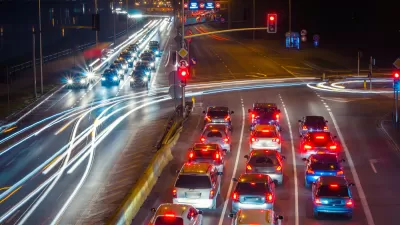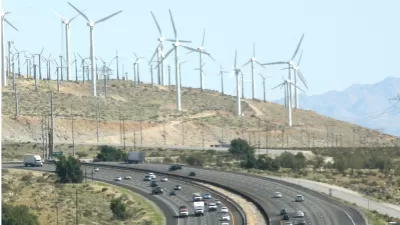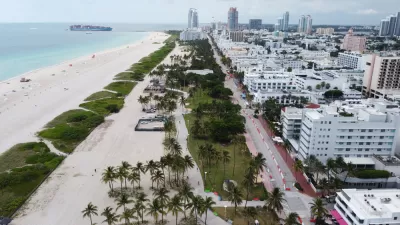Driving in the United States accounted for five percent of global carbon emissions before the pandemic, but U.S. cars and trucks account for 20 percent of the global emission reductions during the pandemic.

Charles Komanoff reports: "U.S. cars and trucks, the source of 5 percent of world carbon emissions, have accounted for a whopping 20 percent of this year’s global dip in carbon pollution, according to comprehensive emissions data compiled by Carbon Monitor and recalculated by me for the Carbon Tax Center."
To put those percentages in terms of raw numbers:
During the first three quarters of 2020, a period that roughly coincides with lockdowns and other restrictions from the COVID-19 pandemic, the world’s emissions of carbon dioxide from burning fossil fuels fell by more than 1.6 billion metric tons from the same period in 2019, a decline of 6.3 percent. Fully one-fifth of the decline, 320 million tons, was due to the nearly 25 percent drop in U.S. ground transport emissions. (A metric ton, roughly 1.1 short tons, is the standard metric for carbon emissions.)
Globally, half of the decline was traceable to reduced ground transportation, even though pre-pandemic, car and truck traffic only accounted for 19 percent of the total carbon emissions.
Hat tip to Streetsblog USA for sharing the article.
Previous Planetizen coverage of pandemic climate emission reductions:
- Greenhouse Gas Emissions Reduced 17% Worldwide in April, Study Says (April 2020)
- The Cost of COVID Carbon Reduction: $3,200-$5,400 a Ton (August 2020)
As mentioned by Komanoff, the reductions are hard to celebrate when so many have suffered and died in the process.
FULL STORY: Downturn in U.S. driving led 2020 global CO2 decline

Planetizen Federal Action Tracker
A weekly monitor of how Trump’s orders and actions are impacting planners and planning in America.

San Francisco's School District Spent $105M To Build Affordable Housing for Teachers — And That's Just the Beginning
SFUSD joins a growing list of school districts using their land holdings to address housing affordability challenges faced by their own employees.

The Tiny, Adorable $7,000 Car Turning Japan Onto EVs
The single seat Mibot charges from a regular plug as quickly as an iPad, and is about half the price of an average EV.

With Protected Lanes, 460% More People Commute by Bike
For those needing more ammo, more data proving what we already knew is here.

In More Metros Than You’d Think, Suburbs are Now More Expensive Than the City
If you're moving to the burbs to save on square footage, data shows you should think again.

The States Losing Rural Delivery Rooms at an Alarming Pace
In some states, as few as 9% of rural hospitals still deliver babies. As a result, rising pre-term births, no adequate pre-term care and "harrowing" close calls are a growing reality.
Urban Design for Planners 1: Software Tools
This six-course series explores essential urban design concepts using open source software and equips planners with the tools they need to participate fully in the urban design process.
Planning for Universal Design
Learn the tools for implementing Universal Design in planning regulations.
Smith Gee Studio
City of Charlotte
City of Camden Redevelopment Agency
City of Astoria
Transportation Research & Education Center (TREC) at Portland State University
US High Speed Rail Association
City of Camden Redevelopment Agency
Municipality of Princeton (NJ)





























